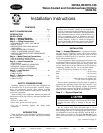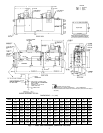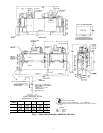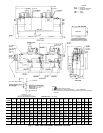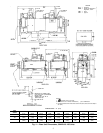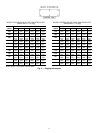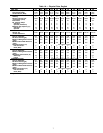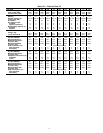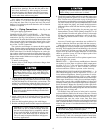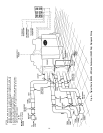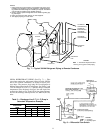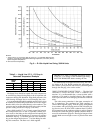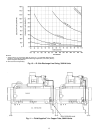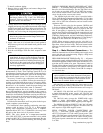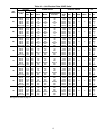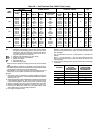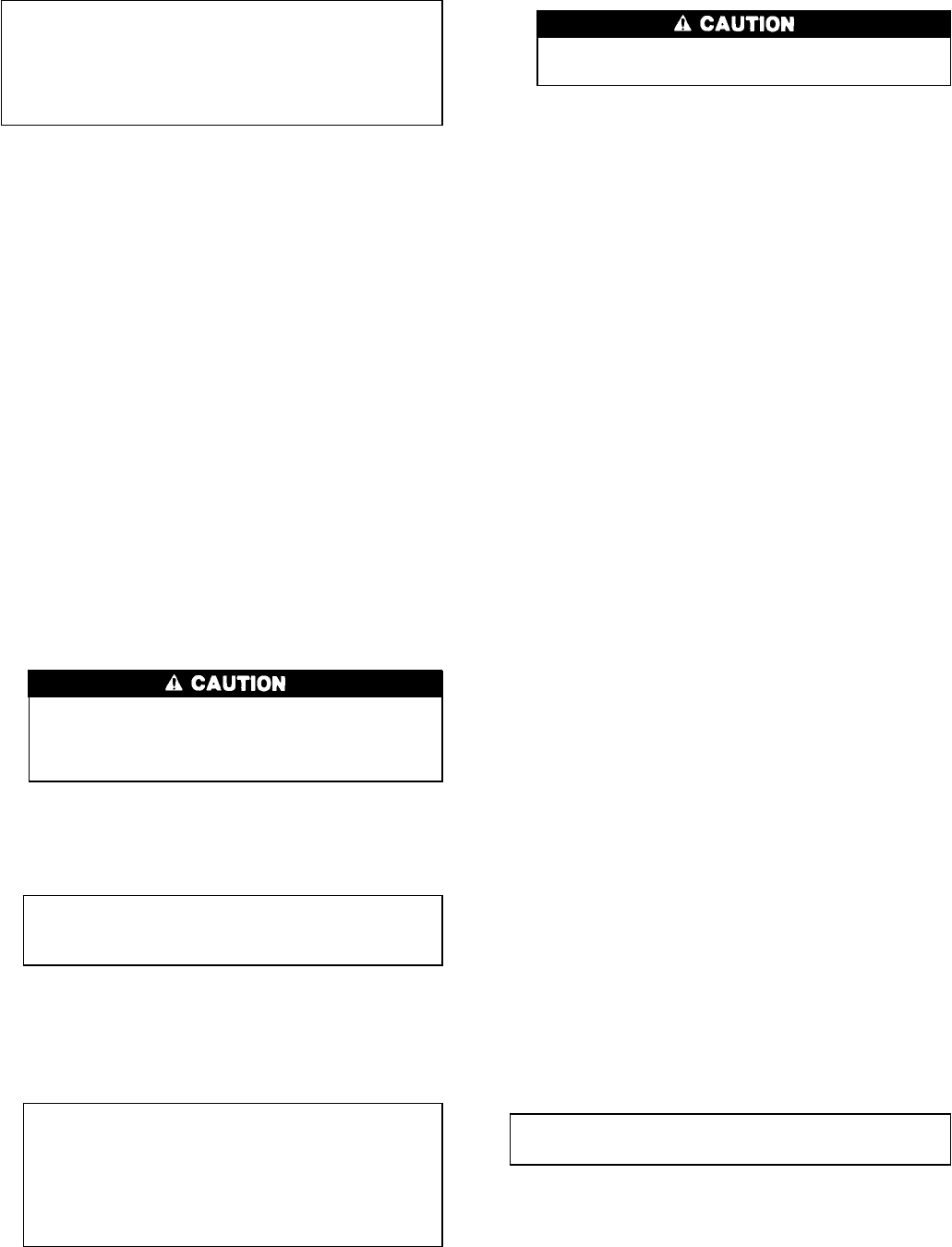
IMPORTANT: Some of the unit skids are larger than
standard door openings. Be sure that the path to the
unit’s final destination is wide enough to accommo-
date unit shipping skid. Remove the skid if necessary.
If skid is removed and rollers are used, attach rollers
to unit tube sheets while moving unit.
Areas where unit mounting points will be located must be
level to within
1
⁄
16
in. per ft (1 mm per m) along the long
axis of the unit. Once unit is in place and level, bolt unit to
the floor. Use isolation pads under the unit to aid in vibration
isolation as required.
Step 3 — Piping Connections — See Fig. 6 and
7 for typical piping applications.
COOLER FLUID, VENT, AND DRAIN — The inlet (re-
turn) fluid connection is always the lower of the 2 cooler
connections. See Fig. 6 for locations. A screen strainer with
a minimum of 20 mesh should be installed ahead of the cooler
inlet to prevent debris from damaging internal tubes of the
cooler. Outlet (supply) fluid connection is the upper connec-
tion of the 2 cooler connections.
The cooler has weld flanges to connect the field-supplied
piping. Plan the piping arrangement in accordance with good
piping practices and so that the piping does not cross in front
of the cooler head. Use flexible connections on cooler pip-
ing to reduce vibration transmission. Offset the piping to per-
mit removal of the cooler head for maintenance. Install pipe
hangers where needed. Make sure no weight or stress is placed
on the water nozzle.
To install cooler piping:
1. Remove bolts on weld flanges, and remove flanges from
cooler fluid heads.
Remove the weld flanges before welding piping to
the flanges. Refer to Fig. 1-4 for weld flange loca-
tions. Failure to remove the flanges may damage the
sensors and insulation.
2. To keep debris from entering the heat exchanger during
shipping and storage, the gaskets between the weld flanges
and the fluid heads do not have holes cut into them. The
gaskets have perforations where the holes are to be cut.
Carefully cut a hole along the designated perforations.
IMPORTANT: Be sure to remove flanges and cut
holes in the gaskets between the flanges and the fluid
heads as indicated.
3. Apply a thin coat of oil to both sides of each gasket to
help ensure a good seal, and reattach each gasket to each
fluid head.
4. Weld the field-supplied piping to the weld flanges.
5. Bolt the weld flanges back onto their respective fluid heads.
IMPORTANT: When bolting the weld flanges to the
fluid heads, be sure to locate the flange such that
the hole in each flange lines up completely with the
hole in each fluid head. If installed incorrectly, part
of the hole in the fluid head will be blocked off.
This will result in impaired fluid flow in high pres-
sure drop applications.
Tighten all cooler head bolts to 250 ft-lb (339 N-m)
before filling system with water (or brine).
6. Install field-supplied differential flow switches in the cooler
piping for protection against loss of flow. The differential
flow switches must be installed on top of the pipe in a
horizontal run and should be at least 5 pipe diameters from
any bend. Install the low-pressure differential flow switch
into the outlet line piping, and install the high-pressure
differential flow switch into the inlet line piping as shown
in Fig. 8.
7. Provide openings in fluid piping for pressure gages and
thermometers (if used). These openings should be 5 to 10
pipe diameters from the unit water nozzles. For thorough
mixing and temperature stabilization, wells in the leav-
ing fluid pipe should extend at least 2 in. (50 mm) into
the pipe.
Accessory Victaulic-type connections are available. Fol-
low the connection directions provided with the accessory.
Although cooler has an air vent, it is recommended that a
field-supplied air vent be installed in the system to facilitate
servicing. Field-supplied shut-off and balancing valves should
also be installed to facilitate servicing and flow balancing.
Locate valves in return and supply fluid lines as close to the
chiller as possible. Locate air vent at highest point of the
cooler fluid system. See Fig. 6.
Provide drain connections at all low points to permit com-
plete drainage of the system.
BRINE UNITS — Special factory modifications to the units
are required to allow them to operate at fluid temperatures
less than 34 F (1.1 C). Be sure that the fluid has sufficient
inhibited ethylene glycol or other suitable corrosion-
resistant antifreeze solution to prevent cooler freeze up.
PREPARATION FOR YEAR-ROUND OPERATION — In
areas where the piping or unit is exposed to 32 F (0 °C) or
lower ambient temperatures, freeze-up protection is recom-
mended using inhibited ethylene glycol or other suitable
corrosion-resistant antifreeze solution and electric heater tapes.
Heater tapes should have a rating for area ambient tempera-
tures and be covered with a suitable thickness of closed-cell
insulation. Route power for the heater tapes from a separately-
fused disconnect. Mount the disconnect within sight from
the unit per local or NEC codes. Identify disconnect as heater
tape power source with warning that power must not be turned
off except when servicing unit.
Fill the fluid loop with water (or brine) and a corrosion-
resistant inhibitor suitable for the water of the area. Consult
the local water authority for characteristics of area water and
a recommended inhibitor for the cooler fluid loop. It is rec-
ommended that once the cooler water lines have been
installed and leak checked that the cooler heads be insulated
with a suitable thickness of closed-cell insulation. This will
minimize the amount of condensation that will form on the
cooler heads.
IMPORTANT: Before starting the unit, be sure all of
the air has been purged from the system.
A drain connection is located at the bottom of the cooler
head. See Fig. 3 and 4 for connection location. Install shut-
off valves to the drain line before filling the system with fluid.
9



